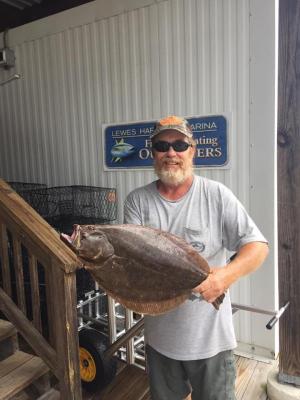Loyal readers know that croakers are one of my favorite fish to catch and eat, yet so far this year they have been absent from our waters. I do have reports of them in Virginia, but not in the number and size of recent years.
A friend on Facebook shared a report by North Carolina indicating that recreational catches of croaker, spot, summer flounder and sea mullet (kingfish) were down significantly in 2016. The report was released by the North Carolina Fisheries folks and does not include any reason for this decrease.
I am equally at a loss as to why there is a decrease in these bottomfish. I could blame it on natural cycles of abundance and decline if it were just one or even two species, but it seems like all of our bottomfish are becoming scarce.
Then, on the other hand, we are seeing fish in relative abundance that we never saw 10 years ago. Triggerfish, sheepshead and spadefish were unheard of above North Carolina before the 1990s. That’s when they showed up in Virginia, and now they are here in Delaware.
The other interesting fact this year is the very cold water temperature on the bottom in the bay and ocean. It had been in the mid-40s until a recent warmup into the upper 40s. This may be the reason there are so many ling at the Old Grounds.
The bottom line to all of this is a slow season for those of us who depend on inshore bottomfish for our recreation. Only time will tell if this trend is short or long term.
Ferry boat to become reef
The Delaware River and Bay Authority has sold the Cape May-Lewes Ferry MV Twin Capes to the Delaware Department of Natural Resources and Environmental Control’s contractor Coleen Marine of Virginia Beach, Va., for $200,000. The ferry is on its way to Coleen Marine’s yard, where it will be prepared for sinking as part of the Del-Jersey-Land reef.
According to the DRBA, Twin Capes has been out of service since 2010 and mothballed since 2013. The ferry was built in 1974 at Todd Shipyards in Houston, Texas, and it was one of three original vessels used by the Cape May-Lewes Ferry service. Today, the three ferries left in service are the MV Delaware, MV New Jersey and MV Cape Henlopen. These three are much more efficient to operate than the MV Twin Capes and can take care of all the service’s obligations.
While much work will be done to prepare the ferry for deployment as an artificial reef, there will be some salvageable equipment that can be sold. The propellers, rescue boats, benches, chairs, bow thruster and pumps are some of these items. The total value of the resale items should be around $230,000.
The MV Twin Capes is 320 feet long with many compartments. It will be a perfect site for the propagation of marine life. Sinking is planned for 2018, but in the past, these predictions have been a bit optimistic.
As with all such projects in Delaware, proceeds from the General Fishing License matched 3-to-1 by federal funds from the excise tax on recreational fishing equipment will pay for this contribution to our artificial reef program.
Fishing report
As noted above, inshore bottomfishing has been slow. A few nice flounder have been caught from the Old Grounds to the bay reef sites to the Back Bays and the Lewes-Rehoboth Canal. Live minnows, squid and Gulp! remain the top flounder baits.
The Inner and Outer walls hold triggerfish and sheepshead. Sand fleas and squid seem to be the most effective baits. These same baits produce the same fish from the rocks at Indian River Inlet.
Bay reef sites hold flounder and triggerfish. The most productive technique for flounder has been jigging directly over reef structure with bucktails tipped with squid or Gulp! Triggerfish will hit small bits of clam, shrimp or squid on small hooks.
Chunking for tuna remains good at inshore lumps such as Massey’s Canyon, Hot Dog and Chicken Bone. The best action is usually at dawn and dusk, but the fish can turn on and off at will.
Trolling in the canyons has been fair for tuna, dolphin and billfish. Here too the best time to fish is early or late in the day.
We had one report of dolphin caught on the troll between A Buoy and the Lightship Buoy. This same area on out to the 19-Foot Lump can hold mackerel and false albacore.
Down at Fenwick Shoal they are catching two- to three-pound blues on trolled spoons. The Spanish mackerel that were so thick last year have been scarce this year. Triggerfish have been caught on the Fenwick Shoal wrecks.






















































